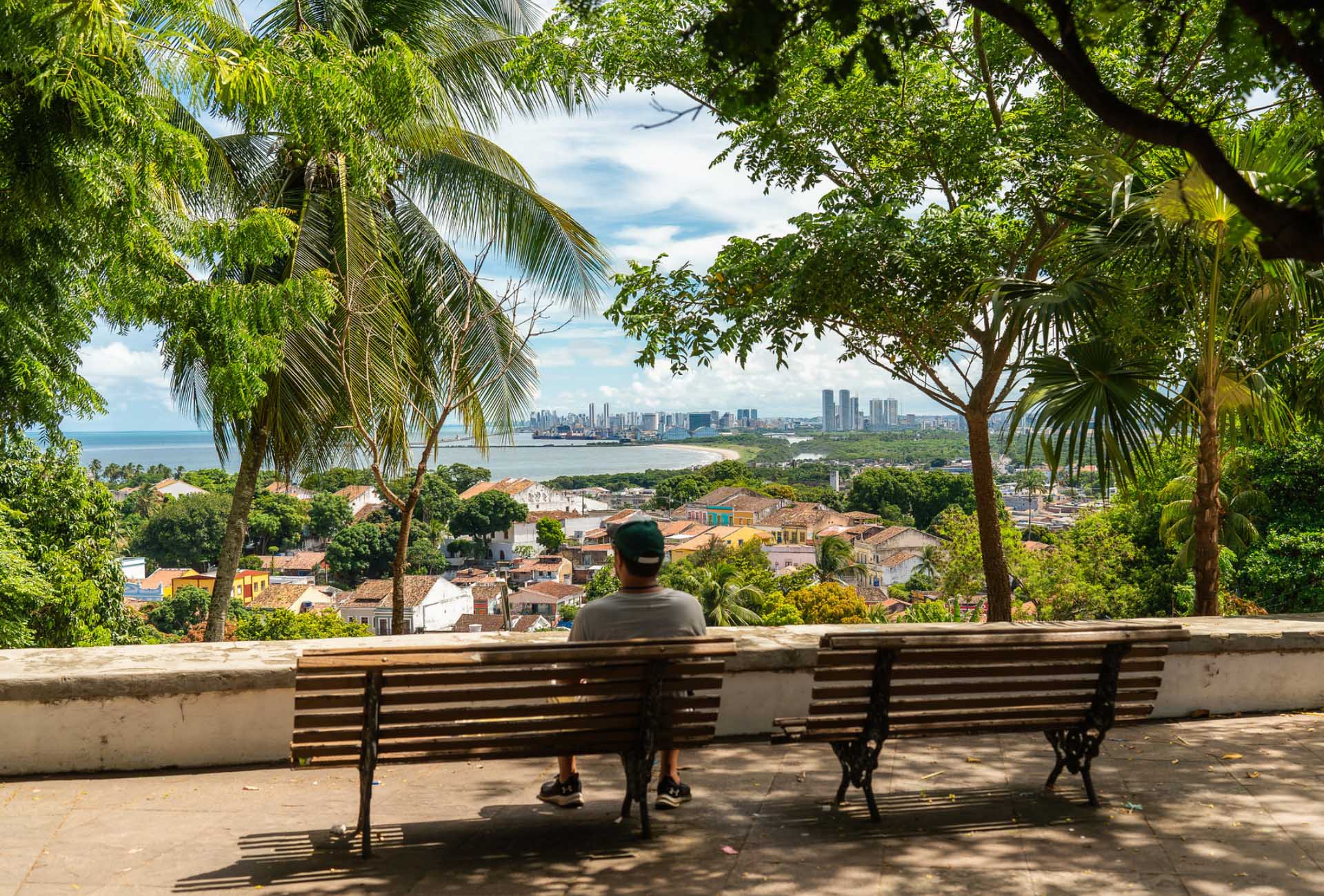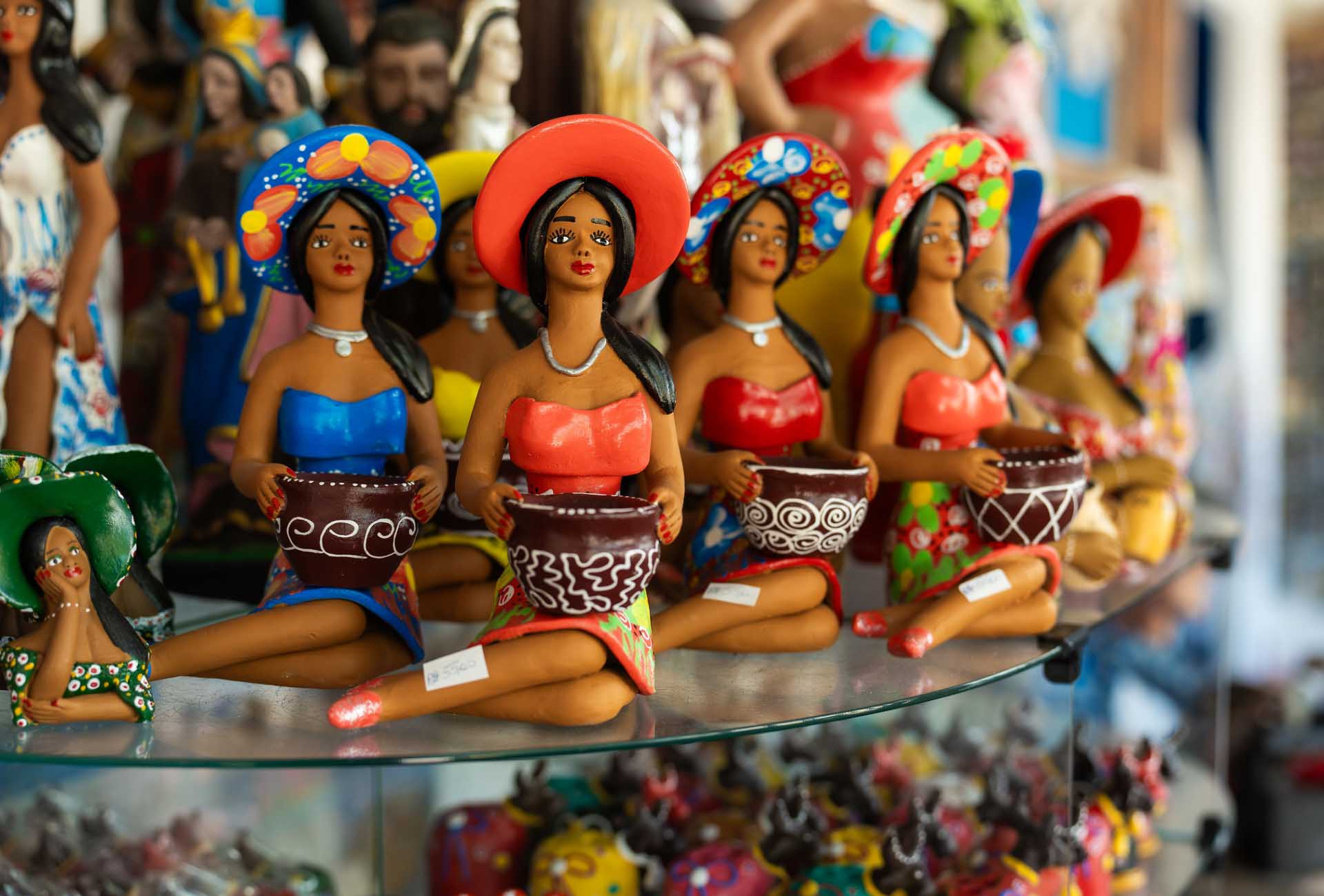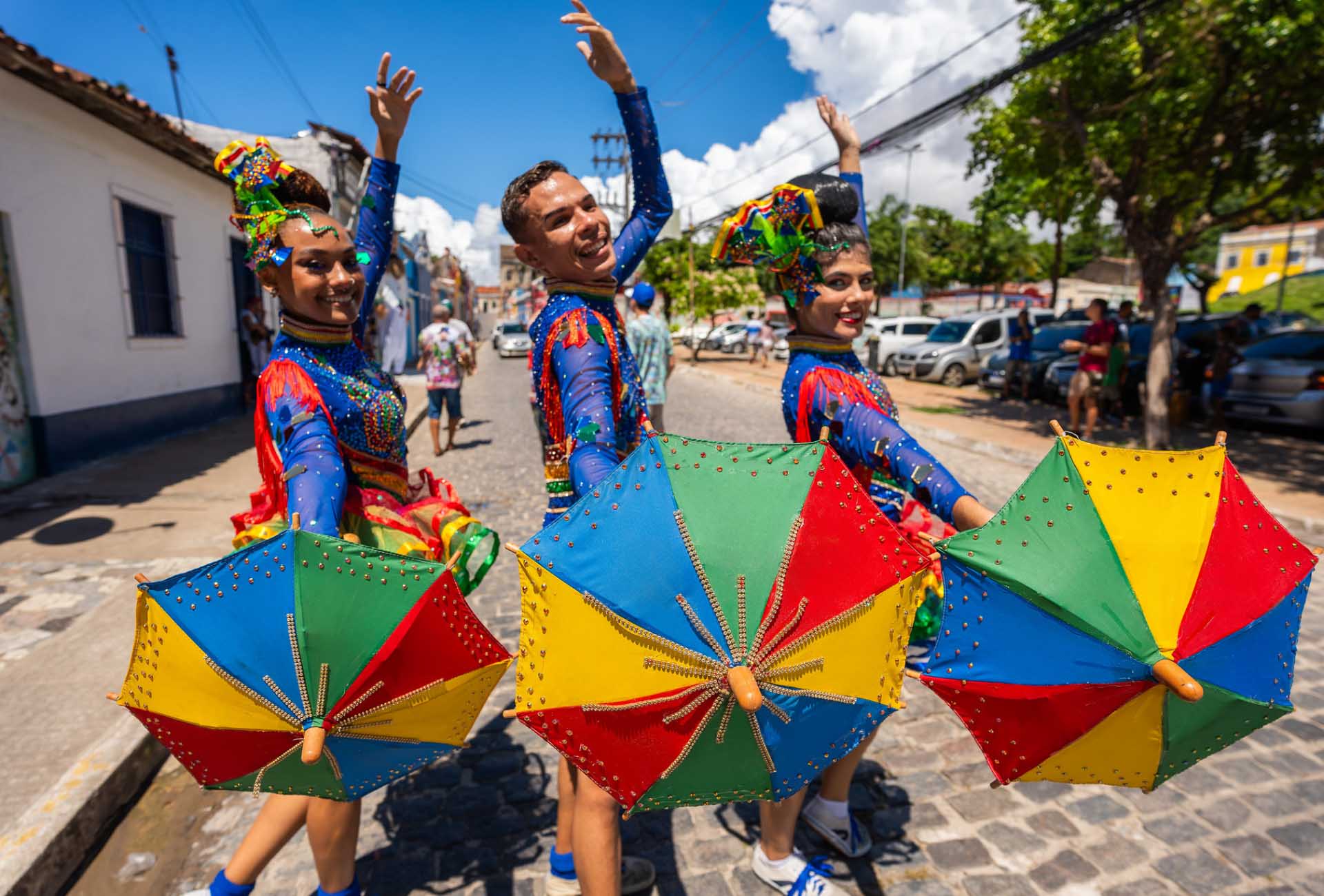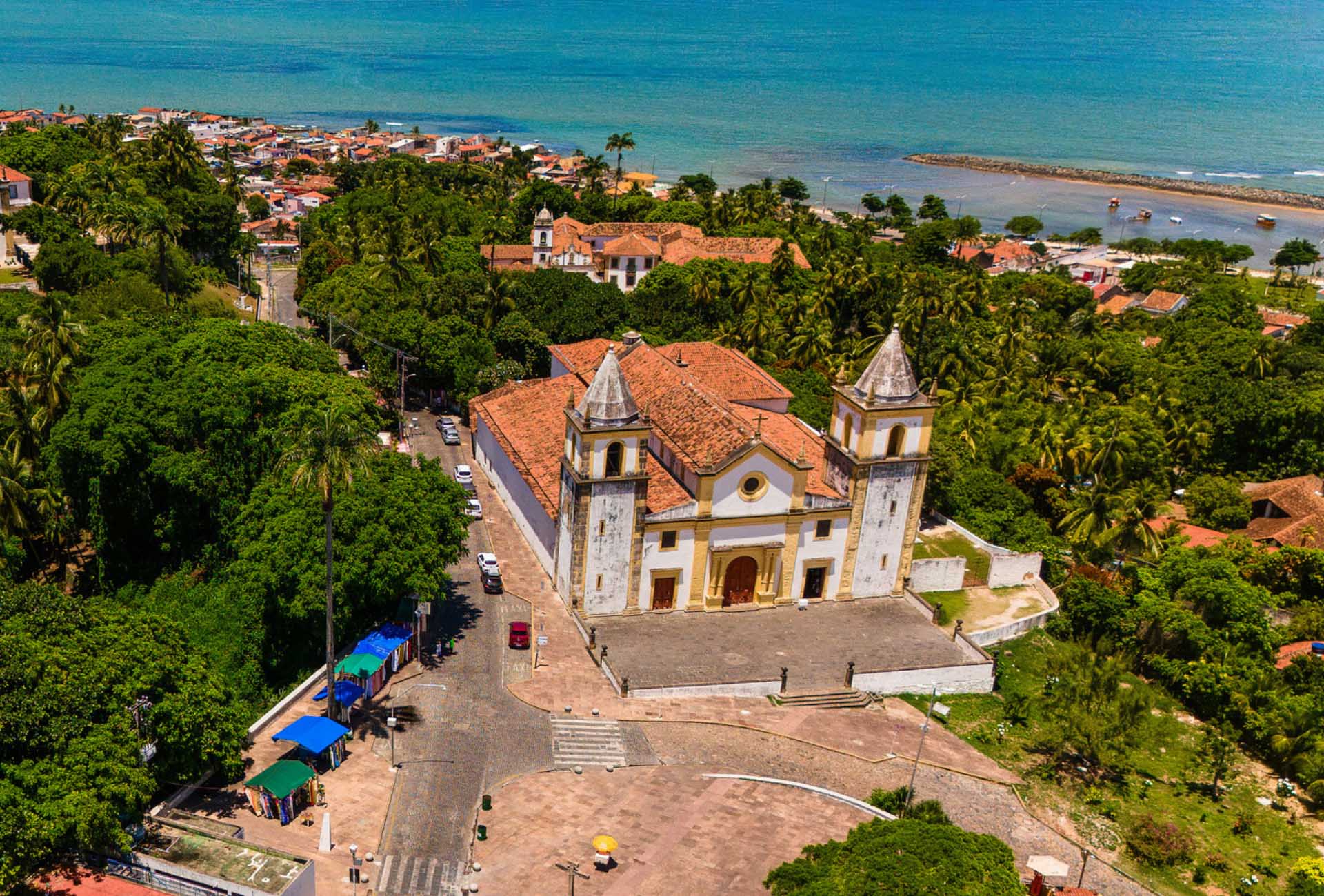African influence is present in many aspects of culture and daily life in Olinda, from music and dance to cuisine and religion.
Olinda is a simply charming historic city, full of stories to tell! In fact, it was the second Brazilian city to be declared a World Heritage Site by UNESCO. But besides its rich colonial heritage, Olinda also preserves the culture of the African peoples who contributed to the city’s construction.
Olinda Negra Walk
Exploring Olinda’s historic center from an ancestral perspective is an experience you will never forget! The tour is a walk through the city’s slopes where you will visit several important landmarks while the guide tells relevant stories of the black people.

The meeting point is at Mercado da Ribeira, where several craft galleries and workshops for carvers, engravings, and paintings operate. Built in the late 17th and early 18th centuries, the building has a characteristic colonial Brazilian architecture. The floor is made of bricks, the door frame is made of stone, and it also has two terraces with columns. It’s a true journey back in time!
From there, you will walk to Bica dos Quatro Cantos. It is one of Olinda’s three springs that are part of the city’s emotional memory and tell much of the region’s history. Built in the early 16th century, Bica dos Quatro Cantos has been revitalized and now offers drinking water to those passing by. It’s a great opportunity to hydrate and fill your water bottle!

The next stop is at Largo do Amparo, where the Church of Nossa Senhora do Amparo is located – built in 1613 and rebuilt in 1644 after being destroyed by a fire caused by the Dutch. The region is full of history, and the guide will tell you all about it.
The route continues to Alto da Sé, a highly visited region where you will find the famous Panoramic Elevator, the Sé Church, the Giant Puppets house, and much more. Besides the tourist spots, handicrafts take over the streets in many little shops and stalls. It’s the ideal place for you to find a trip souvenir! And, of course, admire an incredible view of the sea!

The tour ends at Largo do Bonsucesso, considered one of the largest and oldest architectural complexes built by enslaved blacks in Brazil. There you can visit the Church of Rosário dos Homens Pretos and a monument erected to bring members of the Afro culture closer to the Catholic religion. It is in Largo do Bonsucesso that important cultural manifestations take place, such as the departure of the Homem da Meia Noite group and the celebrations of the Noite dos Tambores Silenciosos (Night of the Silent Drums).

History of the Black People
Throughout the walk, the guide will talk about the relevance of the black people in cultural manifestations such as frevo, blocos, maracatus, and afoxés. The itinerary brings prominence to important personalities and cultural expressions for the construction of Olinda’s and Pernambuco’s cultural plurality, which go unnoticed by the majority circulating through the slopes.

Discover all the experiences you can have in Olinda and other Brazilian destinations. Follow the Visit Brasil Blog and follow our social media, all @visitbrasil.
They loved it and you will too.